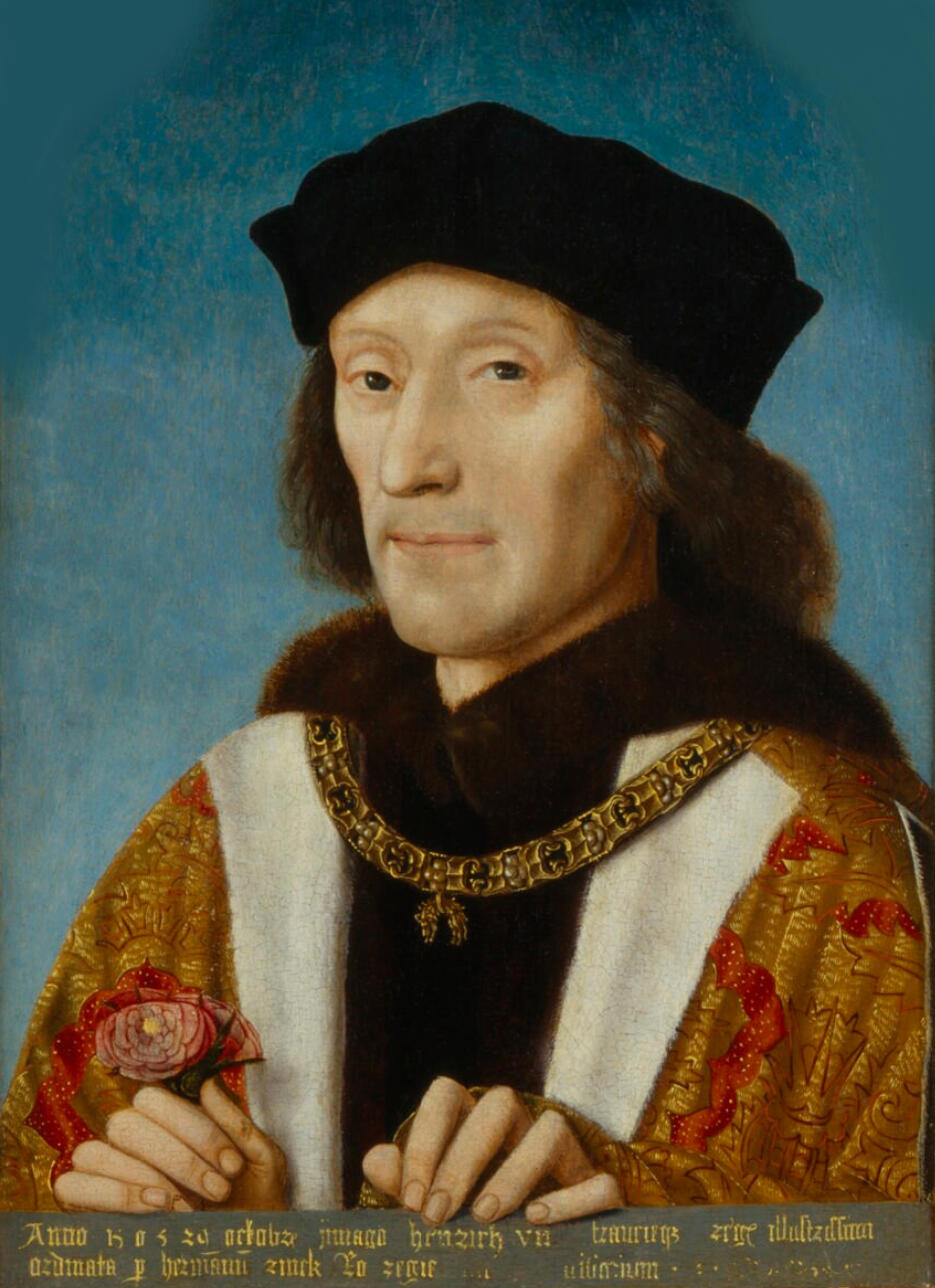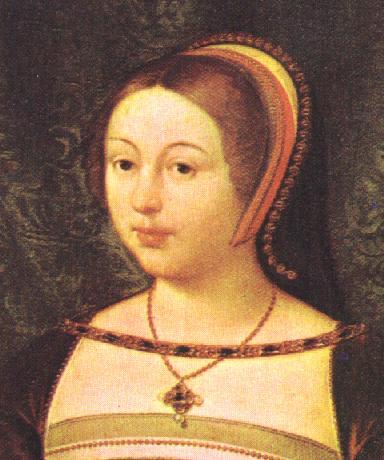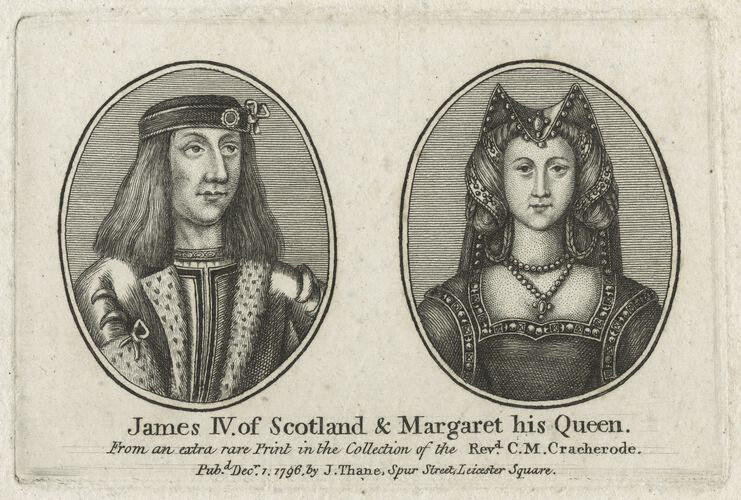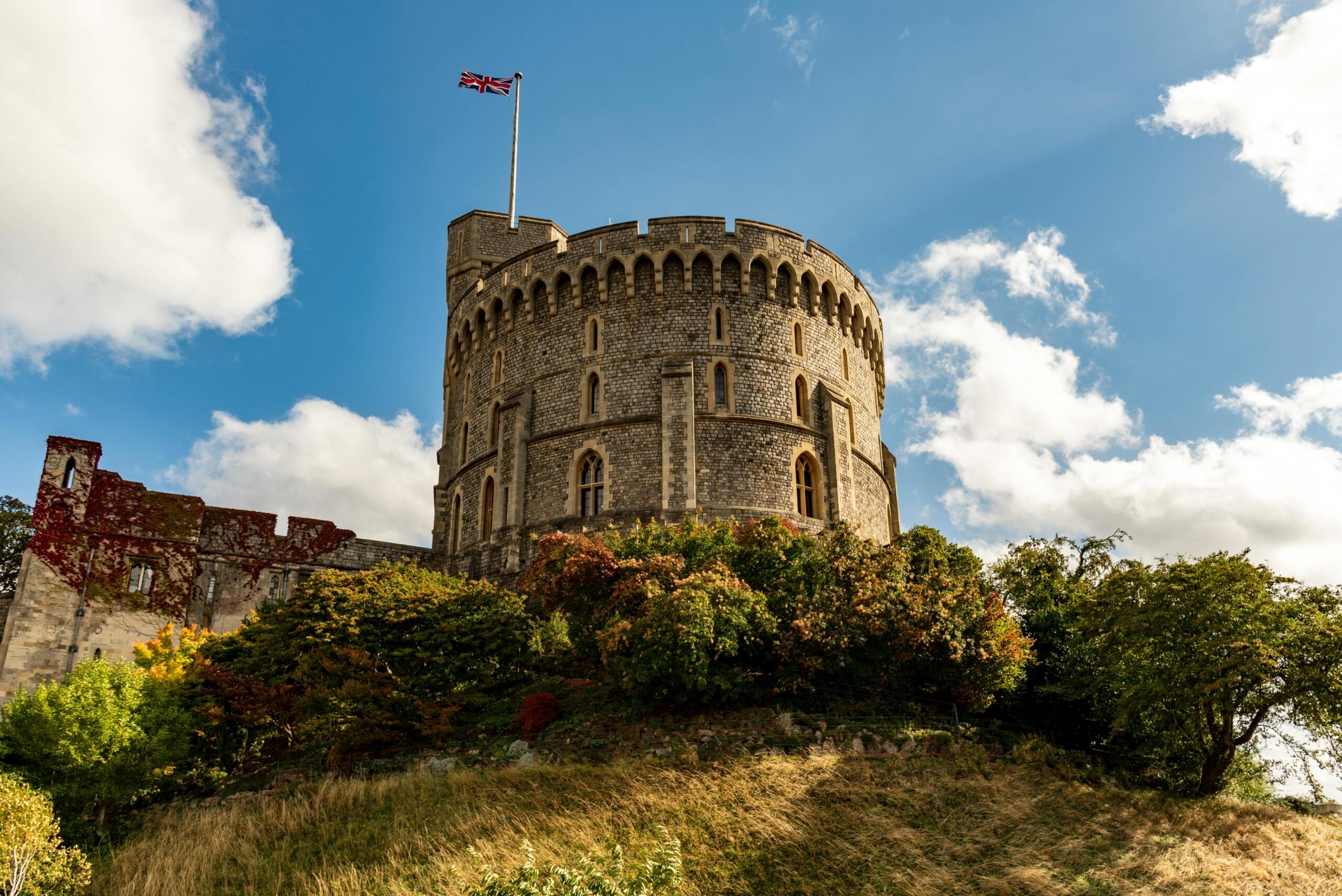With a life of political back-and-forth, Margaret Tudor was, from a young age, one of the most powerful figures behind the throne of her time. Before turning 18, this English princess married as part of a plan for political alliances to unify Scotland and England, became Queen Consort of Scotland, experienced the death and birth of some of her children and faced the death of her mother.
Her husband and even her descendants betrayed her somewhat, but she always remained strong and tenacious. Overshadowed by her younger brother, Henry VIII, with whom she had a lifelong rivalry, in the end, it was Margaret's lineage that won the English throne, leaving a clear victor in this "struggle" between the Tudors.
28 November 1489
Birth
Westminster Palace, England
8 August 1503
First Marriage to James IV
Edinburgh, Scotland
10 April 1512
Birth of her third son, James (future king)
Linlithgow, Scotland
9 September 1513
Loss of her husband
Battle of Flodden
6 August 1514
2nd Marriage (Archibald Douglas)
Perth, Scotland
3 March 1528
3rd Marriage (Henry Stewart)
Scotland
18 October 1541
Death
Perthshire, Scotland
The entire British monarchy after 1603 is directly descended from Margaret Tudor, when James VI of Scotland (her great-grandson) became James I of England. Dead at 51, she was a queen who lived as she wanted.

Margaret Tudor's Legacy
From birth, Margaret Tudor's destiny was to be a key part of her father's legacy as king. Born only four years after her father ascended to the throne of England, Henry VII intended to leave behind the unification of Scotland and England.

Though King Henry VII very successfully cemented his position as a unifying force in English politics by marrying Elizabeth of York to end the War of the Roses, his position was actually quite vulnerable.
His claim to be king was through his descendance from Edward III’s fourth son, John of Gaunt, and his mistress. Henry’s great-grandfather was therefore illegitimate – and Henry’s claim to the throne came through his mother’s side. This was something not very well thought of during these times.
As we mentioned, the eldest daughter of Henry VII played a key role in the Union of the English and Scottish Crowns: without Margaret Tudor's offspring, there would have been no such union.
Grandmother of Mary Queen of Scots and great-grandmother of the first king after the unification (James VI), Margaret Tudor made sure throughout her life to maintain the power and security of her lineage, without forgetting the peace between her place of origin (England) and Scotland (her adoptive homeland).
Margaret supported international diplomacy and negotiations with key figures such as Catherine of Aragon (one of Henry VIII's wives) and Pope Clement VII throughout her life.
👉Thanks to the vast collection of letters that survive from Margaret Tudor (more than 100 letters in English and Early Scots), we know essential details of her life, ranging from her marriage to James IV and her relationship with her sister Mary to the days leading up to her death.👈
Early Life and Background
Born in 1489, the eldest daughter of Henry VII and Elizabeth of York, she was named after her grandmother, Lady Margaret Beaufort. Along with her siblings, Arthur, Henry, and Mary, she was part of a lineage (the product of the union of the Houses of York and Lancaster) of well-educated children who were always expected to rise to power and engage in diplomacy, which explains her early marriage at 13.
As an English princess, Margaret Tudor learned to write in English, French, and Latin, and participated in courtly activities, all aimed at preparing her to become queen. As for her religion, Margaret was a Christian.

Marriage to James IV of Scotland
Political Alliance and Wedding
Her father's initial intention in marrying her to a Scotsman was to achieve unification, which, as mentioned, would come four generations later with Margaret's great-grandson.

Margaret's marriage to James IV, King of Scotland, at only 13 years old, took place in 1503, one year after Scotland and England signed the Treaty of Perpetual Peace (although it is said that the first negotiations for this marriage took shape when Margaret was 6 years old, when her father ascended to the throne). The marriage between Margaret and James interrupted his succession of mistresses and illegitimate children. 1
The Treaty of Perpetual Peace was an agreement that marked peace between England and Scotland for the first time in 170 years, signed in 1502 by Margaret's father, Henry VII of England, and James IV of Scotland. Unfortunately, in 1513, James declared war on England again, with fatal consequences.
“Marriage was a prominent ‘life-stage’ ritual linked to achievement of the hegemonic manly state in the period: it was associated with self-control and was seen as a stabilising force against the ‘follies of youth’. James IV (1488‒1513), James V (1513‒1542) and James VI (1567‒1625) came to the throne as minors and their weddings provided particularly potent opportunities for shaping their identity both at home and abroad”, according to a paper by the Scottish Historical Review 2.
Life as Queen Consort
Margaret came to the throne barely into her teens, in a marriage that lasted 10 years until James IV's death. The Queen Consort of Scotland sometimes communicated with her husband in French, as she did not fully master the Scots language of the time, which was beginning to be "Englishized" at the time.
As Queen Consort of Scotland, facing family pressure to unify the kingdoms, Margaret would have to start a family to produce an heir. Although married at 13, she did not become a mother until she was 17.
Children and Their Fates
As mentioned, Margaret Tudor didn't begin bearing James's children until 1507, when she was 17. As a result of the marriage, Margaret and James IV had six children (two daughters and four sons), and only one of them, James, survived childhood and became king.
All Margaret Tudor's children
| Margaret Tudor's children | Birth–Death | |
|---|---|---|
| Children with James IV | ||
| James | 1507–1508 | Lived only one year |
| Unnamed daughter | 1508 | Died shortly after birth |
| Arthur | 1509–1510 | Lived only one year |
| James, Duke of Rothesay | 1512–1542 | Survived to adulthood; became king James V |
| Unnamed daughter | 1512 | Died shortly after birth |
| Alexander | 1513 | Lived only one year |
| Children with Archibald Douglas | ||
| Margaret Douglas | 1515–1578 | Survived to adulthood |

Widowhood and Regency
Death of James IV
In 1513, with a son just one year old and another on the way (Alexander), Margaret Tudor would lose her husband at the Battle of Flodden, one of the bloodiest episodes in Scottish history, to the army of her brother, Henry VIII.
The Scottish king, James IV, had become an ally of France, which had been invaded by his brother-in-law, Henry. Following this episode, in September 1513, thousands of Scottish nobles died at the hands of the English army in Coldstream, on the border between Scotland and England.
The Battle of Flodden left Margaret Tudor a widow, and her barely one-year-old son, James, would - supposedly - go on to become the next king of Scotland as James V.
Henry VIII was known as a charismatic figure who spent money lavishly and became increasingly tyrannical in his reign. He's also remembered as the king who had 6 wives, after all, and his lustful conquests are the stuff of legend!
Role as Regent for James V
Left widowed with a son just over a year old, heir to the Scottish throne, and another, just months old (born after his father's death), Margaret assumed the role of Regent of Scotland; one of the conditions for her considering this position was that she not remarry. Margaret ignored her regent's conditions and married Archibald Douglas, 6th Earl of Angus, in 1514, a decision that was one of the worst of her life.
With her marriage to Archibald Douglas, Margaret lost the regency of Scotland and custody of her two sons, James V (king) and Alexander, just a year after the death of her children's father, James IV. Following Margaret's disobedience, John Stewart, Duke of Albany, was appointed Regent of Scotland in 1515, lasting until 1524.
Subsequent Marriages and Political Intrigues
Marriage to Archibald Douglas, 6th Earl of Angus
Margaret Tudor paid a high price for marrying Archibald Douglas, 6th Earl of Angus, losing power in Scotland and having to leave her children in the care of the Scottish kingdom.
With Douglas, a member of one of Scotland's greatest noble families, Margaret had a daughter, whom she also named Margaret. She was born in 1515, a year after Margaret's second marriage began, and after she had been separated from her children, experiencing the death of little Alexander away from him (he only lived to be one year old).
After losing custody of her sons, losing one and giving birth to her daughter, Margaret Tudor returned to England in 1516, but her husband, Douglas, remained in Scotland for political reasons.
Margaret's problems with Archibald Douglas began just two years after their marriage when she discovered he was living in her Scottish domain, enjoying the wealth associated with her titles.
In 1528, Margaret finally managed to get Pope Clement the 7th to nullify her marriage to Archibald Douglas, thanks to the Duke of Albany's good relations with Rome and to the fact that she always maintained an impeccable image as a Christian, as stated in various documents "Margaret's devotions on her wedding journey were part of an array of practices that made up her public piety in the early sixteenth century and, as queen, her honour and authority rested in part on her reputation as a devout Christian". 3
Marriage to Henry Stewart, Lord Methven
Shortly after obtaining a divorce from her second marriage, Margaret Tudor married Henry Stewart, first Lord of Methven, with whom she had no children, but with whom she would experience similar problems to those she had with the Earl of Angus: infidelity and misuse of her fortune.
Although this time she was unsuccessful in obtaining another divorce, fortunately for Margaret, her son, James V, upon assuming full power, relied on his mother as an advisor, listening to her, especially to maintain peace between England and Scotland. James V would marry a Frenchwoman, Marie de Guise, thus also maintaining good relations with France.
Later Life and Death
Final Years and Death
It is known from the surviving archive of letters about Margaret Tudor 4 that, as her wealth dwindled due to widowhood and subsequent failed marriages, she wrote constantly to her brother, Henry VIII, asking for his financial support, though without much success. Margaret fought throughout her life to win back her children, from whom she was forced to separate due to political circumstances.
During the latter part of her life, Margaret Tudor lived close to her son, James V, but not to her daughter, Margaret Douglas. Little is known about the relationship between Margaret Tudor and her daughter, which was weakened over the years when, exiled in England from a young age with her father, Archibald Douglas, she grew up far from her mother, but with her cousins, the children of Henry VIII, with whom her father had made alliances.
Margaret and her daughter lost all contact after James V ascended the Scottish throne in 1528, and they never saw each other again. Later, the young Margaret Douglas became Countess of Lennox in England and served at the English court, always a close friend of her cousin, who eventually became Queen Mary I of England.
Margaret Tudor died of cardiac arrest on October 18, 1541, at Methven Castle, Perthshire, at 51 years old.
Margaret Tudor's Impact on the House of Tudor
Influence on Anglo-Scottish Relations
In an era when few women held positions of power, Margaret Tudor fought to maintain that authority, both officially and unofficially, throughout her life. Margaret Tudor was an integral part of Anglo-Scottish diplomacy aimed at unifying the kingdoms, not only because of her father's plans but also because of her tenacity and intelligence, especially when dealing with her brother, Henry VIII.
Even without an official title, Margaret guided her son, James V, in managing diplomatic, military, and personal relations when he formally assumed the throne at just 16 years old, even planning meetings with his uncle Henry and leading a family life with her daughters-in-law.
Descendants and the Union of the Crowns
Upon Margaret's death, her son James V invaded England, but fell ill and died shortly after, aged just 30, on December 14, 1542. He was away at Falkland Palace, far from his family, preventing him from meeting his only daughter, who would become an icon of Scottish history.
Days before James's death, on December 8, James V's second wife, Marie de Guise, gave birth to Mary Stuart, the future Queen of Scots, whose son, James VI, finally unified the English and Scottish crowns.
King James VI's highlights:
- Ascended to the throne once the line of his great-granduncle, Henry VIII (whose children, Mary, Elizabeth, and Edward, died childless), ended.
- James VI of Scotland, and I of England, ruled the union between the Scots and English from 1603 to 1625, the year of his death.
- James VI/I established the Stuart dynasty through his daughter, the 'Winter Queen', Elizabeth.
- Ruling both Scotland and England, Elizabeth Stuart's descendants through Sophia of Hanover secured the succession to the British throne. The royal line continued through George III, Victoria, Edward VII, George V, George VI, Elizabeth II and the current King, Charles III.
Margaret Tudor's Legacy was in her Lineage
Margaret Tudor lived from 1489 to 1541, though she was not a Queen of England but a Queen Consort of Scotland; she is one of the most important figures in British history. Her marriage to James IV of Scotland paved the way for the union of England and Scotland under one crown.
| Name and Royal Title (Realm) | Birth – Death | Reign Period | Relationship to Margaret Tudor |
|---|---|---|---|
| Margaret Tudor, Queen Consort of Scotland | 28 Nov 1489 – 18 Oct 1541 | Queen Consort of Scotland 1503 – 1513 | Starting point |
| James V of Scotland | 10 Apr 1512 – 14 Dec 1542 | King of Scotland 1513 – 1542 | Son |
| Mary Stuart (Mary, Queen of Scots) | 8 Dec 1542 – 8 Feb 1587 | Queen of Scotland 1542 – 1567 | Granddaughter |
| James VI of Scotland / James I of England | 19 Jun 1566 – 27 Mar 1625 | King of Scotland 1567 – 1625 / King of England 1603 – 1625 | Great-grandson |
| Elizabeth Stuart, Queen of Bohemia | 19 Aug 1596 – 13 Feb 1662 | Queen Consort of Bohemia 1619 – 1620 | 2× Great-granddaughter |
| Sophia of Hanover, Electress of Hanover | 14 Oct 1630 – 8 Jun 1714 | Heir Designate to the British Crown (Act of Settlement 1701) | 3× Great-granddaughter |
| George I, King of Great Britain and Ireland | 28 May 1660 – 11 Jun 1727 | King 1714 – 1727 | 4× Great-grandson |
| George II, King of Great Britain and Ireland | 30 Oct 1683 – 25 Oct 1760 | King 1727 – 1760 | 5× Great-grandson |
| Frederick, Prince of Wales | 1 Feb 1707 – 31 Mar 1751 | Did not reign | 6× Great-grandson |
| George III, King of Great Britain and Ireland | 4 Jun 1738 – 29 Jan 1820 | King 1760 – 1820 | 7× Great-grandson |
| Prince Edward, Duke of Kent and Strathearn | 2 Nov 1767 – 23 Jan 1820 | Did not reign | 8× Great-grandson |
| Queen Victoria, Queen of the United Kingdom | 24 May 1819 – 22 Jan 1901 | Queen 1837 – 1901 | 9× Great-granddaughter |
| Edward VII, King of the United Kingdom | 9 Nov 1841 – 6 May 1910 | King 1901 – 1910 | 10× Great-grandson |
| George V, King of the United Kingdom | 3 Jun 1865 – 20 Jan 1936 | King 1910 – 1936 | 11× Great-grandson |
| George VI, King of the United Kingdom | 14 Dec 1895 – 6 Feb 1952 | King 1936 – 1952 | 12× Great-grandson |
| Elizabeth II, Queen of the United Kingdom | 21 Apr 1926 – 8 Sep 2022 | Queen 1952 – 2022 | 13× Great-granddaughter |
| Charles III, King of the United Kingdom | 14 Nov 1948 – | King 2022 – present | 14× Great-grandson |
References
- Undiscovered Scotland. Timeline: 1500 to 1550 (no date). Available at: https://www.undiscoveredscotland.co.uk/usfeatures/timeline/to1550.html (Accessed: October 2025).
- Marriage, Manhood and Sartorial Splendour for Sixteenth-century Scottish Kings. Author: Lucinda H. S. Dean. Scottish Historical Review (7 December 2021). Available at: https://www.euppublishing.com/doi/abs/10.3366/shr.2021.0536?widget=aboutthisjournal(Accessed: October 2025).
- Queenship at the Renaissance Courts of Britain. Catherine of Aragon and Margaret Tudor 1503–1533.Published online by Cambridge University Press. (24 October 2019) https://www.cambridge.org/core/books/abs/queenship-at-the-renaissance-courts-of-britain/queenship-and-prereformation-piety/BF587526748C9231478E1227207B9EEB (Accessed: October 2025).
- Margaret Tudor: Life of The Week. History Extra Podcast (October 2025) Available at: https://open.spotify.com/episode/235B65qLLIsPR6P4PnoVK6?si=U1loh0anTQmmmyvm7HqQzw (Accessed: 28 October 2025).

















